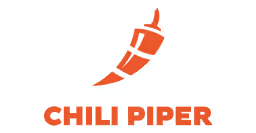SalesHood Alternatives
Looking for SalesHood alternatives? This guide offers a detailed breakdown of 10 other platforms to help you make an informed decision.

You might be using SalesHood for its strong sales coaching and content features. It is a popular tool for a reason, especially for teams that need to get new reps up to speed quickly. Many companies find it effective for these specific tasks.
However, some users find the platform's interface complex, and its reporting can feel limited. This might lead you to look for other options. We've analyzed the top alternatives to help you choose. Let's get started.
Consider 11x for Sales Efforts
If your team wants to use digital workers in its sales process, 11x provides a platform for this. It focuses on the automation of specific sales tasks. You can see how it works and if it aligns with your operational goals.
11x is a GTM platform that uses AI agents to manage the sales process. An agent named Alice finds prospects, runs outreach, and updates your CRM. Another agent, Julian, qualifies inbound leads and books meetings.
The platform consolidates multiple tools into one. It can replace separate solutions for data enrichment, outreach, and email warmup that are common in GTM stacks.
SalesHood Alternatives
Below, we review several alternatives to SalesHood. Each option is analyzed based on its pricing, features, and specific advantages or potential drawbacks when compared to SalesHood.
1) Mindtickle

Mindtickle is a Revenue Enablement Platform for B2B organizations. It combines training, content, coaching, and analytics to help sales reps perform and to engage buyers. The platform is designed to consolidate a company's revenue tech stack.
Use cases include personalized sales training to reduce ramp time and AI sales coaching to develop rep skills. It also supports tailored buyer experiences to close deals and consistent messages for partner enablement.
Mindtickle's Main Features
- Offers scalable pitch practice with instant, AI-driven scoring and feedback.
- Creates branded digital sales rooms that function as buyer portals to accelerate deal cycles.
- Provides conversation intelligence through call recording, transcription, and insight extraction to improve execution.
- Includes an AI Copilot that automates workflows and surfaces just-in-time guidance for reps.
How Mindtickle Compares to SalesHood
Average Review score: 4.7/5 stars based on 2,218 G2 reviews.
- Mindtickle offers branded digital sales rooms that function as dedicated portals for buyers. This provides a more focused buying experience than standard content sharing in SalesHood.
- The platform uses AI to score sales pitches and provide instant feedback. This offers a more scalable practice environment compared to the coaching features in SalesHood.
- Its conversation intelligence feature automatically records and analyzes sales calls. This gives managers deeper insights into rep performance than SalesHood's more general coaching tools.
- This tool integrates more sales functions into one platform, including conversation intelligence and digital sales rooms, potentially simplifying a company's tech stack more than SalesHood.
Potential Drawbacks Compared to SalesHood
- Some users find Mindtickle's navigation complex. This can create a learning curve for new team members, unlike SalesHood, which many find straightforward for quick onboarding.
- The platform's extensive features, while powerful, can sometimes feel overwhelming. Teams that need a simpler tool focused mainly on sales coaching and content might find SalesHood more direct for their needs.
- It may occasionally experience slow loading times, according to some user reviews. This could interrupt workflow for reps who need immediate access to training materials or coaching feedback.
Pricing and Budget Considerations
Neither SalesHood nor Mindtickle provides public pricing details, so you will need to request a quote from both. User reviews indicate that Mindtickle has a high perceived cost, which is a factor to consider in your budget.
2) Showpad Content
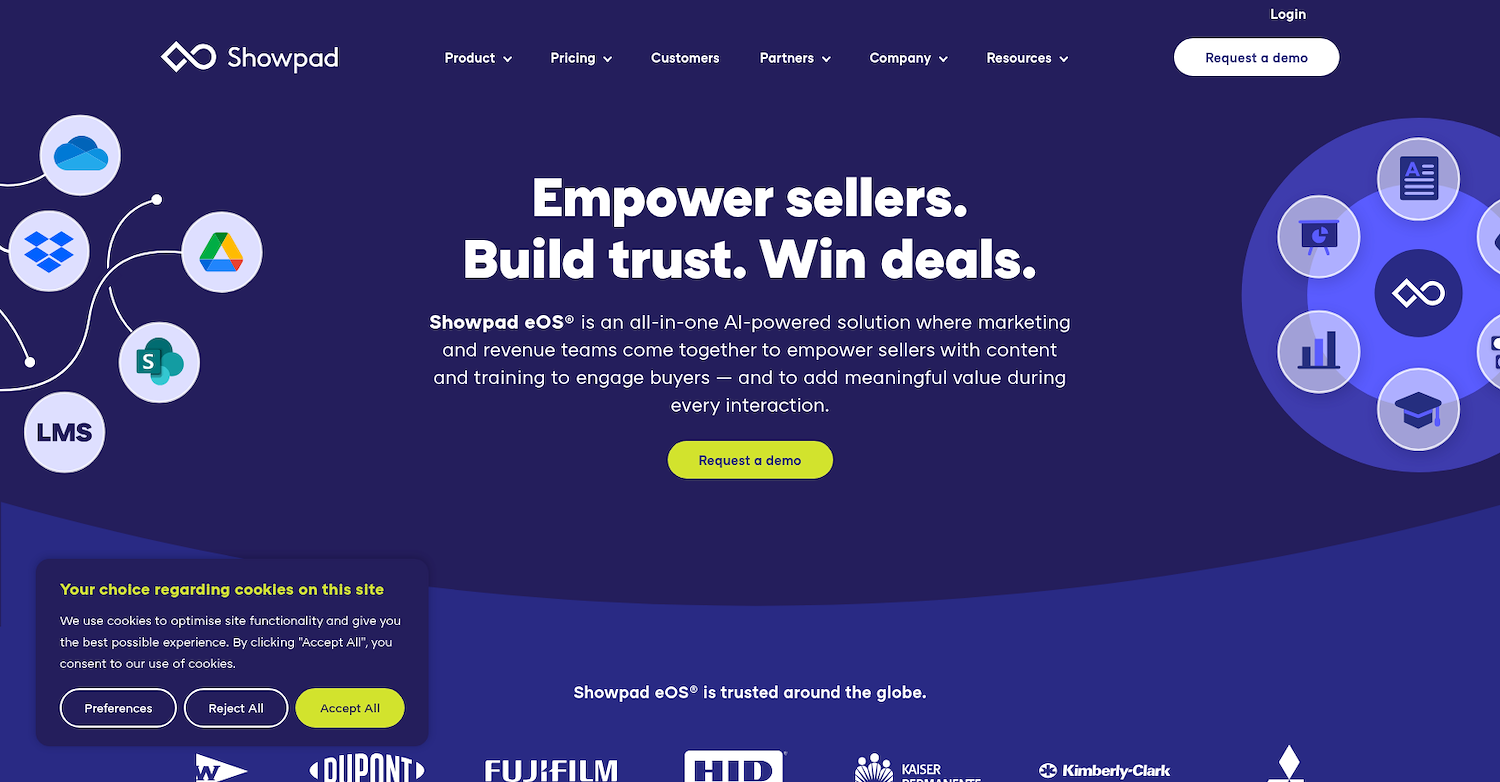
Showpad Content is an AI-powered platform that unites marketing, sales-enablement, and revenue teams. It centralizes sales content, training, and coaching so sellers can find the right material and add value at each customer touchpoint. The platform focuses on seller effectiveness through onboarding and coaching, and on buyer engagement with immersive demos. It also provides analytics to understand which content resonates and how top performers manage deals.
Showpad Content's Main Features
- Creates dynamic buyer experiences using digital sales rooms, 3-D models, and 360° showrooms.
- Uses AI for intelligent search and content recommendations to help sellers find assets.
- Provides analytics on deals, content, and training with AI-generated insights and visualizations.
How Showpad Content Compares to SalesHood
Average Review score: 4.6/5 stars based on 1,895 G2 reviews.
- Showpad Content supports immersive content like 3-D models and 360° showrooms. This creates a more engaging buyer experience than the standard content sharing available in SalesHood.
- It creates dedicated digital sales rooms for buyers. This offers a more organized and focused environment for sharing deal-related content compared to SalesHood's general content library.
- The platform's AI-powered search helps sellers find relevant content faster. This is a more advanced approach than the content organization in SalesHood, which may require manual browsing.
- This tool provides detailed analytics on content performance and buyer engagement. Its AI-driven insights offer more depth than the reporting features in SalesHood, which some users find limited.
Potential Drawbacks Compared to SalesHood
- Showpad Content's primary focus is on content management. SalesHood, in contrast, offers a more specialized environment for sales coaching and role-playing exercises, which some teams prefer for skill development.
- Some users note that the platform's initial setup can be complex. Teams that need to onboard reps quickly might find SalesHood's more direct interface simpler to adopt.
- The tool's wide range of features can sometimes feel overwhelming for teams with simpler needs. SalesHood provides a more focused solution if your main goals are basic content access and coaching.
Pricing and Budget Considerations
Neither SalesHood nor Showpad Content provides public pricing details, so you will need to request a quote from both. User reviews indicate that Showpad Content is more expensive per user, which is a factor to consider in your budget.
3) Highspot
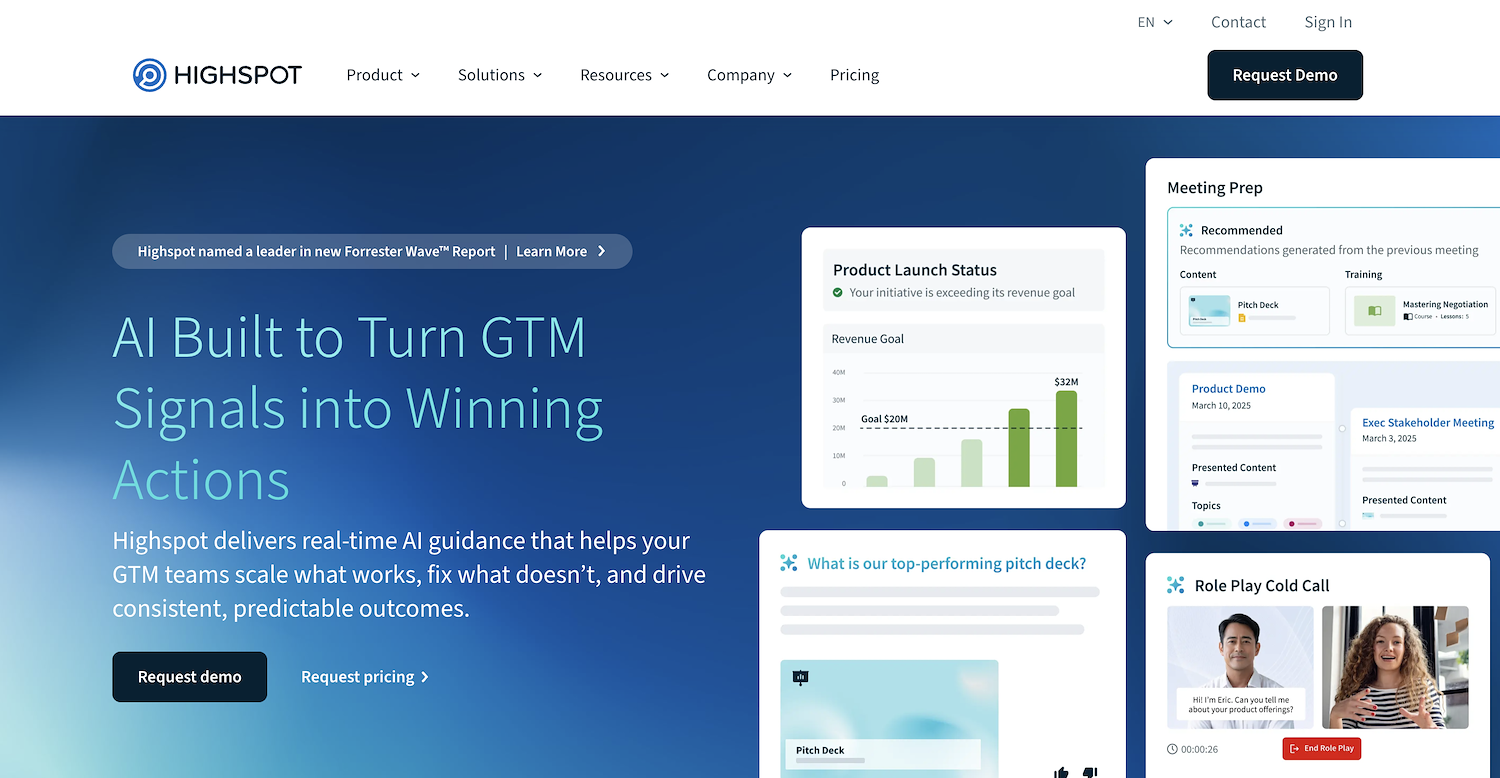
Highspot is a unified, AI-driven platform for go-to-market enablement. It helps organizations improve sales productivity and achieve repeatable sales success for enterprise and mid-market companies.
Use cases include sales content management, buyer engagement through digital sales rooms, and sales training. The platform also offers AI role-play for practice and coaching to improve call performance and win rates.
Highspot's Main Features
- Offers guided selling frameworks through sales plays and playbooks tied to real-time usage data.
- Includes AI role-play that provides scenario-based practice powered by generative AI.
- Automates content and document creation with an AutoDocs feature.
- Provides unified analytics that connect enablement initiatives to business outcomes.
How Highspot Compares to SalesHood
Average Review score: 4.7/5 stars based on 1,192 G2 reviews.
- Highspot provides guided selling frameworks through sales plays. This offers more structured, real-time guidance for reps than the general content access in SalesHood.
- It includes an AI role-play feature for practice with generative AI. This allows for scalable training, which is different from the manager-led coaching focus in SalesHood.
- The platform's AutoDocs feature automates document creation. This saves reps time on administrative tasks compared to the manual content handling in SalesHood.
- Its unified analytics connect enablement efforts to business results. This gives a clearer performance overview than SalesHood's reporting, which some users find less detailed.
Potential Drawbacks Compared to SalesHood
- Highspot's extensive features can present a steep learning curve. Teams that require a straightforward tool for core coaching might find SalesHood's focused design simpler to adopt.
- The tool centers on content management and guided selling. In comparison, SalesHood provides a more specialized environment for manager-led coaching and role-play, which some sales teams prefer for skill practice.
- Its setup process can sometimes be lengthy, with an implementation time of around two months. This is a factor for organizations that require a faster deployment, where SalesHood might offer a quicker path to get reps onboard.
Pricing and Budget Considerations
Neither SalesHood nor Highspot provides public pricing details, so you will need to request a quote from both. User reviews indicate that Highspot has a high perceived cost, which is a factor to consider in your budget.
4) Seismic
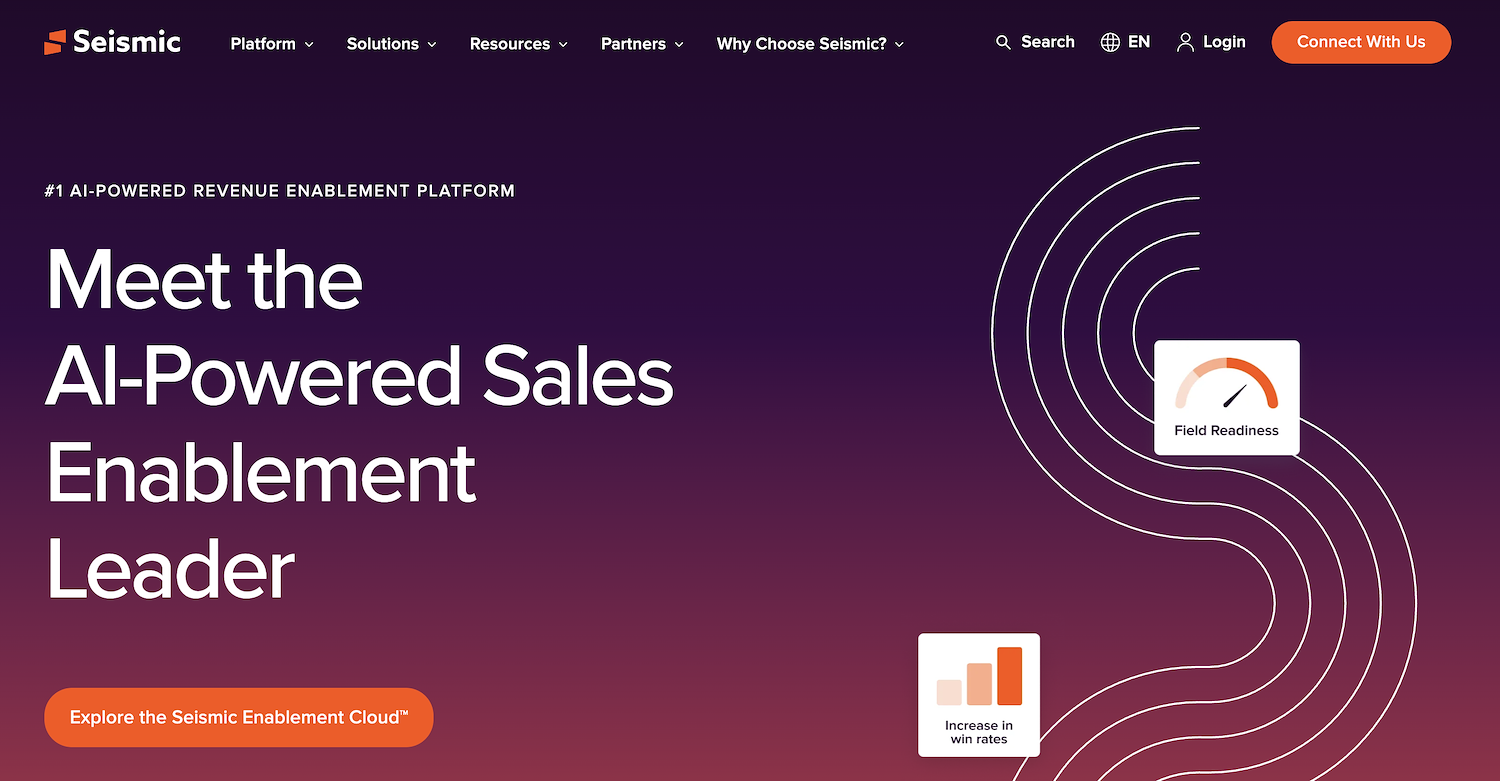
Seismic is an enablement platform that gives customer-facing teams the skills, content, and tools to support revenue growth. It unifies these functions to help organizations engage customers and prepare their teams.
Use cases include sales content management, buyer engagement, and team coaching. The platform also provides tools for strategy, planning, and analytics through its enablement intelligence features.
Seismic's Main Features
- Includes Aura AI and Aura Copilot to automate content personalization and surface real-time insights.
- Provides tools for meeting preparation, live content delivery, and post-call follow-up through its Seismic for Meetings feature.
- Allows for the design and execution of structured enablement programs with measurable outcomes.
- Offers pre-built connectors for integration with major CRM, marketing automation, and productivity stacks.
How Seismic Compares to SalesHood
Average Review score: 4.7/5 stars based on 1,615 G2 reviews.
- Seismic uses its Aura AI to automate content personalization for each buyer. This provides a more tailored approach compared to the general content library in SalesHood.
- The platform offers a specific tool, Seismic for Meetings, that supports reps during live calls with content and follow-up actions. This is different from SalesHood, which focuses more on pre-call coaching and practice.
- It allows managers to design structured enablement programs and measure their direct impact on revenue. This offers a more strategic view of training effectiveness than SalesHood's focus on individual rep coaching.
- This tool provides pre-built connectors for major CRM and marketing automation systems. This can lead to a more integrated tech stack compared to SalesHood, which may require more custom work for similar connectivity.
Potential Drawbacks Compared to SalesHood
- Some users report that Seismic's platform can feel complex. This is different from SalesHood, which many find more direct for quick onboarding and focused coaching tasks.
- The tool's implementation can take around four months. For teams that need a faster deployment, SalesHood might offer a quicker way to get reps started with training and content.
- Seismic centers heavily on content management and analytics. In contrast, SalesHood provides a more specialized environment for manager-led coaching and skill practice, which some teams prefer for development.
Pricing and Budget Considerations
Neither SalesHood nor Seismic provides public pricing details, so you will need to request a quote from both. User reviews indicate that Seismic has a high perceived cost, which is a factor to consider in your budget.
5) Allego
Allego is a sales enablement platform that combines training, content, and collaboration tools. It helps organizations prepare their sales teams through modern learning and content management.
The platform focuses on video-based practice and peer feedback. Use cases include onboarding, continuous training, and managing sales content for easy access.
Allego's Main Features
- Provides conversation intelligence to record, transcribe, and analyze sales calls for coaching insights.
- Offers video-based role-play and peer feedback to help reps practice their pitch and messaging.
- Includes a centralized content library that is accessible on mobile devices for field sales teams.
- Creates digital sales rooms to share content and collaborate with buyers in a single location.
How Allego Compares to SalesHood
Average Review score: 4.6/5 stars based on 634 G2 reviews.
- Allego emphasizes video-based, peer-to-peer learning. This offers a more collaborative training model than the manager-driven coaching common in SalesHood.
- Its conversation intelligence feature provides automated analysis of sales calls. This gives deeper performance insights than SalesHood's more manual coaching tools.
- The platform has a strong mobile-first design. This makes it useful for field sales teams that need on-the-go access, which can be an advantage over SalesHood's interface.
- This tool offers digital sales rooms for buyer engagement. This provides a more structured experience to share deal materials compared to SalesHood's content features.
Potential Drawbacks Compared to SalesHood
- Some users find Allego's interface can be busy due to its many features. Teams that want a simpler tool might prefer SalesHood's more direct design for core coaching tasks.
- The platform's heavy reliance on video may not fit every company's culture. SalesHood offers a more traditional approach to content and training that some teams may find more suitable.
- Initial setup and integration can be resource-intensive for some organizations. SalesHood is often considered to have a more straightforward implementation for teams that need a quick start.
Pricing and Budget Considerations
Neither SalesHood nor Allego provides public pricing details, so you will need to request a quote from both. User reviews suggest that Allego is a premium-priced solution, which is a factor to consider in your budget.
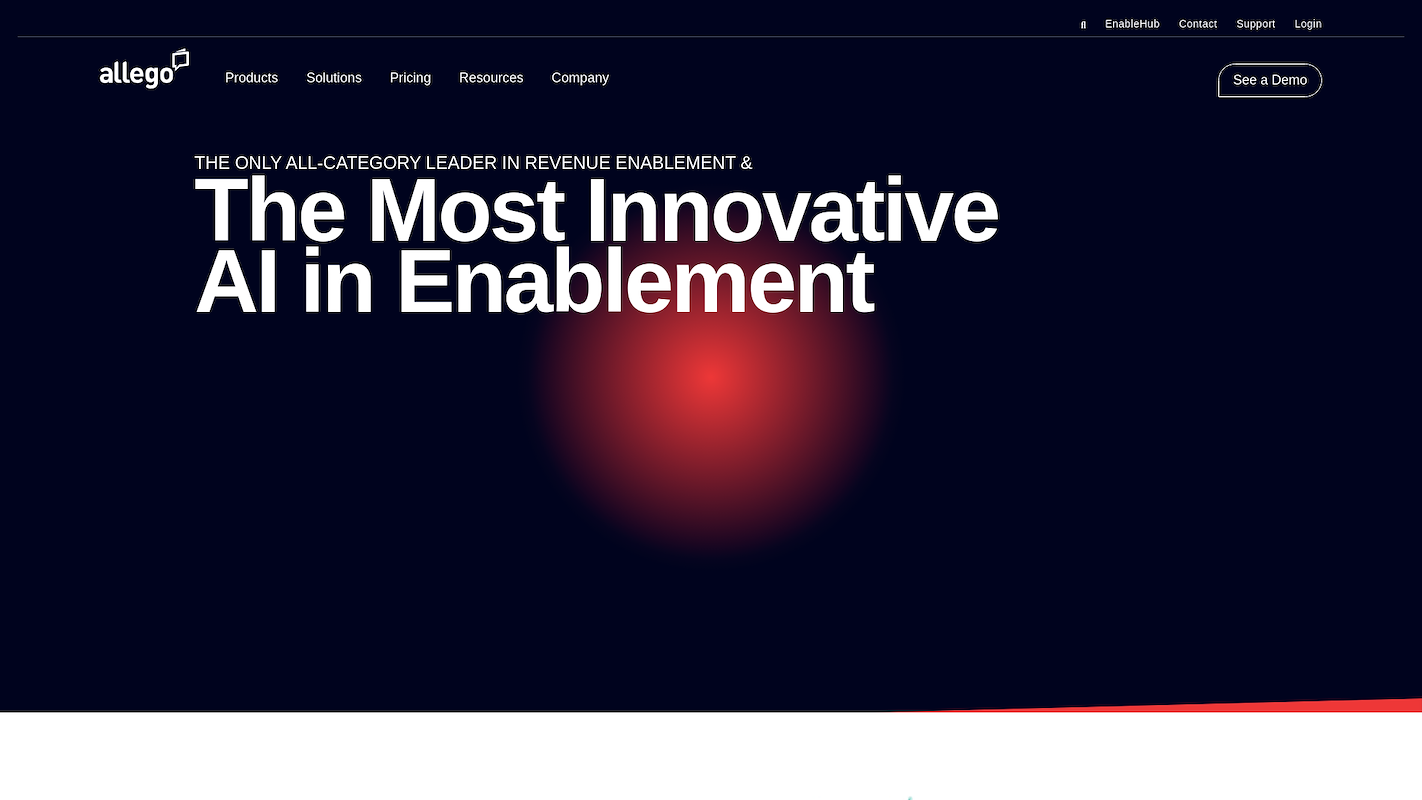
Allego is a sales enablement platform that provides tools for team instruction, content, and collaboration. It helps organizations prepare sales teams through a modern approach to skill development and content management.
The platform's focus is on video-based practice and peer feedback. Use cases cover new hire setup, continuous education, and management of sales content for easy access.
Allego's Main Features
- Provides ready-made AI agents for immediate business impact that do not require complex user prompts.
- Creates collaborative microsites, known as digital sales rooms, to help shorten sales cycles.
- Includes conversation intelligence with call recording and AI analytics to improve coaching efficiency.
- Offers in-flow training and video coaching to help reduce the time it takes for new reps to generate revenue.
How Allego Compares to SalesHood
Average Review score: 4.6/5 stars based on 606 G2 reviews.
- Allego provides conversation intelligence to analyze sales calls automatically. This gives data-driven coaching insights, which is different from the more manual review process in SalesHood.
- The platform focuses on peer-to-peer learning with video practice and feedback. This collaborative model differs from SalesHood's traditional, manager-led coaching structure.
- It offers digital sales rooms for buyers to access shared content in one place. This provides a more organized experience for buyers compared to the general content libraries in SalesHood.
- This tool uses AI for sales role-play scenarios, which provides reps with instant feedback. This approach allows for more scalable practice than the manager-dependent sessions common in SalesHood.
Potential Drawbacks Compared to SalesHood
Allego's focus is on peer-to-peer and AI-driven feedback. Teams that prefer a traditional, manager-led coaching structure might find SalesHood's approach more aligned with their existing sales culture.
Some users find its interface can be busy due to its many features. Teams that want a simpler tool might prefer SalesHood's more direct design for core coaching tasks.
The platform's heavy reliance on video may not fit every company's culture. SalesHood offers a more traditional approach to content and training that some teams may find more suitable.
Pricing and Budget Considerations
Neither SalesHood nor Allego provides public pricing details, so you will need to request a quote from both. User reviews suggest that Allego is a premium-priced solution, which is a factor to consider in your budget.
Consider 11x for Sales Automation
If your sales strategy includes using digital workers, 11x provides a platform for this purpose. Its AI agents handle tasks such as prospecting and lead qualification. You can evaluate if this approach aligns with your operational goals and GTM stack.
At 11x, we use AI agents to run your sales playbook. Alice finds accounts and handles outreach, while Julian qualifies leads and schedules meetings. Our platform replaces separate tools for data, outreach, and email warmup, consolidating your GTM stack.
Book a demo to see the platform in action.
6) Brainshark

Brainshark is a data-driven sales enablement and readiness platform. It helps businesses prepare sales teams with relevant knowledge and skills through content creation, instruction, and coaching tools.
Use cases cover support for new hires, continuous education, and preparation for product launches. The platform also provides just-in-time instruction for reps to use in buyer interactions.
Brainshark's Main Features
- Provides a drag-and-drop course builder that accepts slide decks and video and includes AI voice-over generation.
- Uses AI-driven coaching to score video and audio submissions and provides readiness scorecards to visualize skill gaps.
- Offers gamification elements such as badges, leaderboards, and rewards to increase user engagement.
- Includes a Sales AI suite with tools for real-time buyer simulations and AI-assisted course creation.
How Brainshark Compares To SalesHood
Average Review score: 4.4/5 stars based on 616 G2 reviews.
- Brainshark uses AI-driven coaching to score submissions and create readiness scorecards. This provides automated, objective feedback, which is different from the manager-led coaching process in SalesHood.
- Its course builder includes AI voice-over generation from slide decks. This allows for faster content creation compared to SalesHood, which centers on organizing existing training materials.
- The platform incorporates gamification elements like badges and leaderboards to encourage user participation. This is a feature not central to SalesHood's training approach.
- This tool provides AI-powered buyer simulations for sales practice. This allows for scalable, on-demand training, whereas SalesHood typically relies on manager or peer role-play sessions.
Potential Drawbacks Compared To SalesHood
Some users report that Brainshark's interface feels outdated. This experience differs from SalesHood, which provides a more direct design for its core coaching and content features.
The platform focuses on individual content creation. This approach differs from SalesHood, where teams can collaborate more easily to share best practices and build training materials together.
Its search function sometimes operates slowly, based on user reviews. This may create a delay for reps who need quick access to content, which is a different experience from the content retrieval process in SalesHood.
Pricing and Budget Considerations
Neither SalesHood nor Brainshark provides public pricing details, so you will need to request a quote from both. User reviews indicate that Brainshark has a high perceived cost, which is a factor to consider in your budget.
7) Bigtincan

Bigtincan is a sales enablement platform that helps companies prepare sales teams for buyer interactions. It provides tools for content management, team instruction, and skill development.
Use cases include new hire setup, continuous education, and customer engagement. The platform gives sellers the resources for effective work with buyers.
Bigtincan's Main Features
- Offers add-ons for interactive experiences, including AR/VR product demos and virtual training.
- Uses a Sales-AI suite with AuthoringAI to automate the creation of content and training courses.
- Provides conversation and relationship intelligence to analyze calls, map stakeholders, and assess deal health.
- Integrates with business systems through more than 100 pre-built connectors.
How Bigtincan Compares To SalesHood
Average Review score: 4.4/5 stars based on 241 G2 reviews.
- Bigtincan offers add-ons for interactive experiences, such as AR and VR product demos. This provides a more immersive way for buyers to view products compared to the standard content formats in SalesHood.
- The platform uses a Sales-AI suite to automate the creation of content and courses. This is different from SalesHood, where content creation is a more manual process for teams.
- It includes conversation and relationship intelligence to analyze calls and assess deal health. This gives managers deeper, automated insights than the more general coaching tools available in SalesHood.
- This tool provides over 100 pre-built connectors for integration with other business systems. This can create a more connected tech stack than SalesHood, which may need more custom work for similar integrations.
Potential Drawbacks Compared To SalesHood
- Some users report that Bigtincan's interface can feel complex. This is different from SalesHood, which many find more direct for quick onboarding and focused coaching tasks.
- The platform's setup can be lengthy, with an implementation time of around three months. Organizations that need a faster deployment might find SalesHood offers a quicker way to get reps started.
- Bigtincan centers on content automation and AI-driven insights. In contrast, SalesHood provides a more specialized environment for manager-led coaching, which some teams prefer for skill development.
Pricing and Budget Considerations
Neither SalesHood nor Bigtincan provides public pricing details, so you will need to request a quote from both. User reviews indicate that Bigtincan has a high perceived cost, which is a factor to consider in your budget.
8) Qstream

Qstream is a microlearning platform for sales enablement that uses a science-based method to improve knowledge retention and job performance. The system sends short, scenario-based challenges to reps' devices. Use cases cover new hire setup, product launch preparation, and sales methodology reinforcement.
Qstream's Main Features
- Delivers training through a mobile microlearning platform that uses spaced repetition to increase knowledge retention.
- Includes a leaderboard and push notifications to encourage user engagement with the training content.
- Provides analytics and heat maps that identify knowledge gaps and show coaching opportunities.
- Offers coaching materials and feedback tools to support performance reviews and skill development.
How Qstream Compares To SalesHood
Average Review score: 4.5/5 stars based on 149 G2 reviews.
- Qstream uses a science-based microlearning method with spaced repetition to improve knowledge retention. This is a different approach from the more traditional training modules found in SalesHood.
- Its analytics provide heat maps that show specific knowledge gaps across the team. This offers a more detailed view of proficiency than the general performance reporting in SalesHood.
- The platform includes gamification elements like leaderboards to encourage user engagement. This is a different motivational tool than the one used in SalesHood's more formal coaching environment.
- This tool delivers training through a mobile-first platform with push notifications. This design supports reps in the field, which is a different focus from SalesHood's platform.
Potential Drawbacks Compared To SalesHood
- Qstream focuses on automated microlearning and analytics. This differs from SalesHood, which provides a more direct platform for manager-led coaching and collaborative role-play that some sales cultures prefer.
- The platform's content creation process, which can involve Word templates, may feel less collaborative. In contrast, SalesHood often supports team-based creation and the share of best practices directly within its system.
- Some users find Qstream's report analytics and terminology complex to understand without support. SalesHood's reports, while sometimes less detailed, are often more straightforward for managers to use quickly.
Pricing and Budget Considerations
Neither SalesHood nor Qstream provides public pricing details, so you will need to request a quote from both. User reviews suggest that Qstream is a premium-priced solution, which is a factor to consider in your budget.
9) WorkRamp
WorkRamp is an all-in-one learning platform for employee, customer, and partner training. It helps companies develop their teams through a unified system for instruction and content.
Use cases include sales onboarding, skill development, and customer education. The platform supports the creation of learning paths for different roles within an organization.
WorkRamp's Main Features
- Offers a drag-and-drop course builder and an AI assistant to help create content.
- Provides a content marketplace with pre-built courses from various providers.
- Includes coaching tools with challenges and scorecards for skill practice and feedback.
- Features analytics dashboards to track learner progress and program effectiveness.
How WorkRamp Compares To SalesHood
Average Review score: 4.4/5 stars based on 539 G2 reviews.
- WorkRamp is an all-in-one learning platform for the entire organization. This is broader than SalesHood's specific focus on sales enablement.
- It includes a marketplace with pre-built courses. This can speed up content development compared to creating all materials from scratch in SalesHood.
- The platform is designed for general learning and development. This may lead to stronger integrations with HR systems than SalesHood typically offers.
- This tool provides an AI assistant for course creation. This is different from SalesHood, which focuses more on organizing and sharing existing best practices.
Potential Drawbacks Compared To SalesHood
- WorkRamp's sales-specific features may be less specialized than those in SalesHood. Teams that need deep sales coaching tools might find SalesHood more focused.
- The platform's broader scope can feel complex for teams that only need sales enablement. SalesHood offers a more direct solution for this specific need.
- Some users note that the analytics could offer more depth. SalesHood, while sometimes limited, is tailored to tracking sales-specific coaching and readiness metrics.
Pricing and Budget Considerations
Neither SalesHood nor WorkRamp provides public pricing details, so you will need to request a quote from both. User reviews suggest that WorkRamp is a premium-priced solution, which is a factor to consider in your budget.
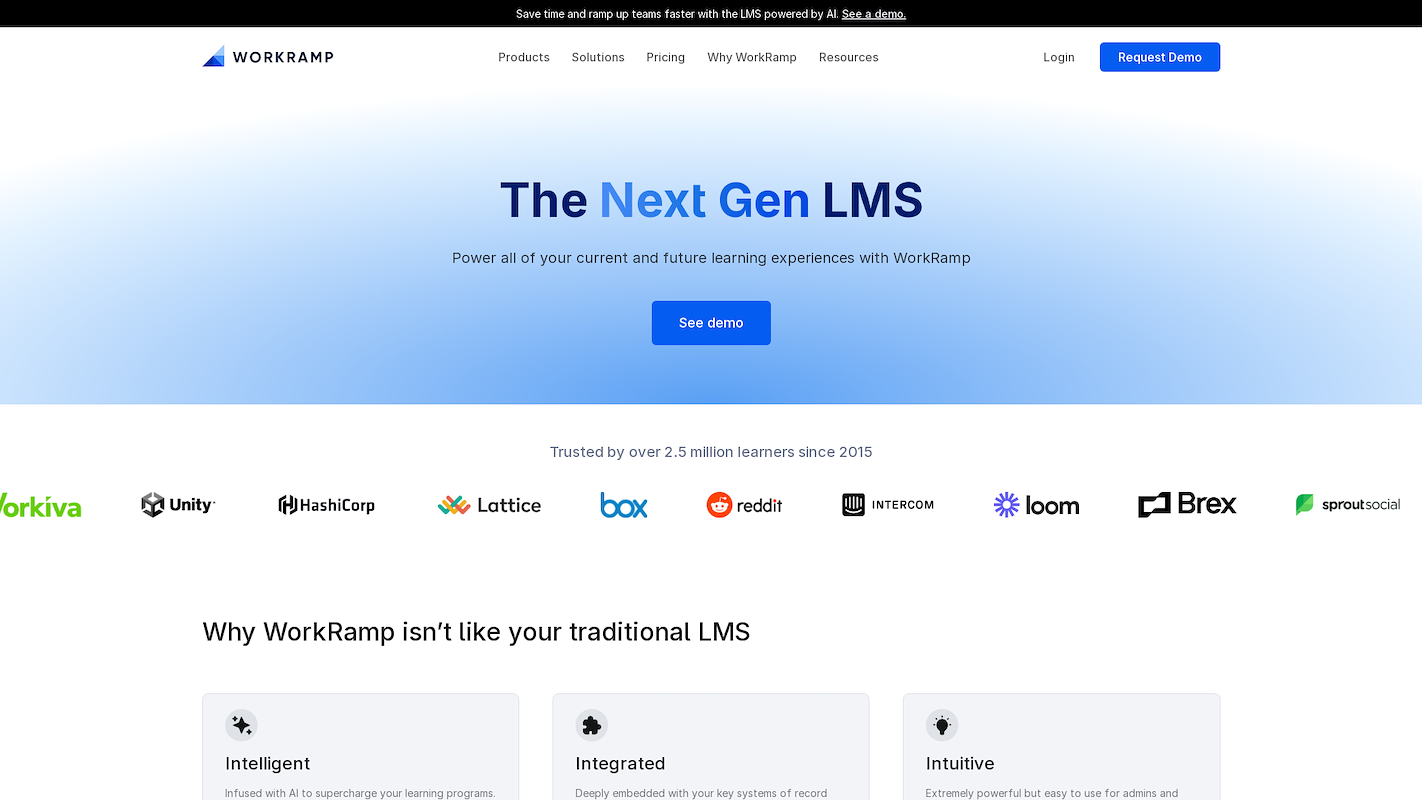
WorkRamp is an all-in-one learning platform for employee, customer, and partner training. It provides a unified system for instruction and content. Use cases include sales onboarding, skill development, and customer education. The platform supports the creation of learning paths for different roles within an organization.
WorkRamp's Main Features
- Provides course authoring and building tools for content creation.
- Creates learning paths and certifications for varied user types.
- Includes gamification to increase user engagement with training materials.
- Offers assessments and quizzes for practice and to measure knowledge.
How WorkRamp Compares To SalesHood
Average Review score: 4.4/5 stars based on 607 G2 reviews.
- WorkRamp serves as an all-in-one learning platform for the entire organization, including customer and partner training. This is a broader scope compared to SalesHood's specific focus on sales teams.
- It provides a course builder for creating content from scratch. This offers a more structured authoring process than SalesHood, which centers on organizing existing training materials.
- The platform allows for the creation of formal learning paths and certifications for different roles. This is different from SalesHood's focus on more informal, manager-led coaching and practice sessions.
- This tool includes gamification elements to increase user engagement with training. SalesHood's approach to motivation is more centered on direct coaching and feedback.
Potential Drawbacks Compared To SalesHood
- WorkRamp's coaching tools are part of a larger learning system. This is different from SalesHood, which provides a dedicated space for sales teams to share best practices and conduct peer-to-peer coaching.
- The platform centers on building structured courses. This may be less direct for teams that prefer SalesHood's model, which helps capture and share real-world sales wins and best practices from top performers.
- Some users find its reporting features are too general for sales needs. SalesHood, in contrast, provides analytics specifically designed to measure sales readiness and the impact of coaching on performance.
Pricing and Budget Considerations
Neither SalesHood nor WorkRamp provides public pricing details, so you will need to request a quote from both. User reviews suggest that WorkRamp is a premium-priced solution, which is a factor to consider in your budget. For the most accurate information, visit WorkRamp's official website.
10) Spekit
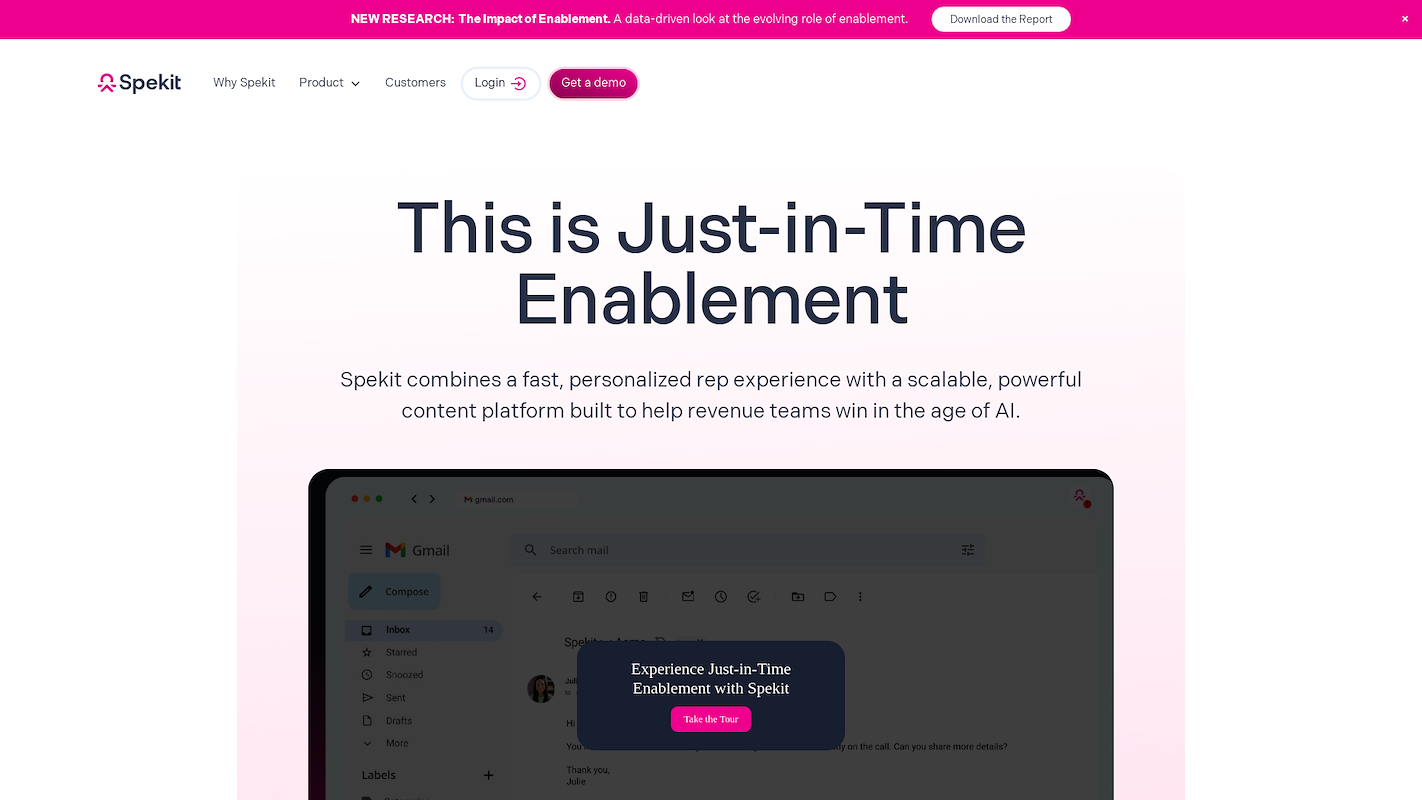
Spekit is a just-in-time enablement platform. It surfaces knowledge and instruction directly inside any workflow. This method supports sales enablement, as it gives answers and guidance where people work. Use cases cover new hire setup, tool adoption, and process changes.
Spekit's Main Features
- Surfaces real-time recommendations and content like battlecards directly within the applications reps are using.
- Uses AI to automatically flag outdated content and enables one-click updates to refresh messaging.
- Delivers bite-sized training and guidance through dynamic playlists that appear within a user's workflow.
- Provides collaborative deal rooms to centralize assets, mutual plans, and insights for specific buyer engagements.
How Spekit Compares To SalesHood
Average Review score: 4.7/5 stars based on 254 G2 reviews.
- Spekit provides guidance directly within the applications your sales team uses. This is different from SalesHood, where reps must open a separate platform to access training materials.
- The platform uses AI to automatically flag outdated content. This helps keep information current, compared to the more manual content review process in SalesHood.
- It delivers training in small, bite-sized pieces that appear within a user's workflow. This contrasts with SalesHood's approach, which relies on more structured, separate training modules.
- This tool offers collaborative deal rooms to centralize all buyer-related assets and plans. This provides a more organized space for specific deals than the general content libraries in SalesHood.
Potential Drawbacks Compared To SalesHood
- Spekit focuses on in-app, just-in-time guidance. This may not suit teams that prefer SalesHood's dedicated platform for structured, manager-led coaching and sales role-play exercises.
- The tool is designed to push information to users in their workflow. This is different from SalesHood, where teams can collaborate to build a library of best practices and share sales wins.
- Its function as a digital adoption platform means some features are general. SalesHood, by contrast, is built only for sales teams, so its tools for readiness and coaching are more specialized.
Pricing and Budget Considerations
Neither SalesHood nor Spekit provides public pricing details, so you will need to request a quote from both.
Which One Should You Go With?
The choice of a SalesHood alternative depends on many variables. This guide shared several options to help you decide which platform best fits your team's specific needs and goals.
If your sales strategy includes automation, consider 11x. The platform uses AI agents for tasks like prospect discovery and lead qualification. This approach can consolidate your GTM stack and replace separate tools for data, outreach, and email warmup.


